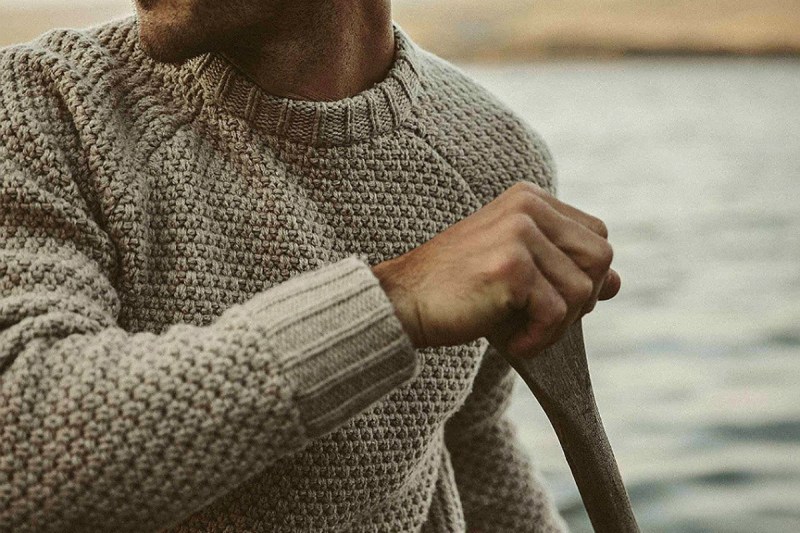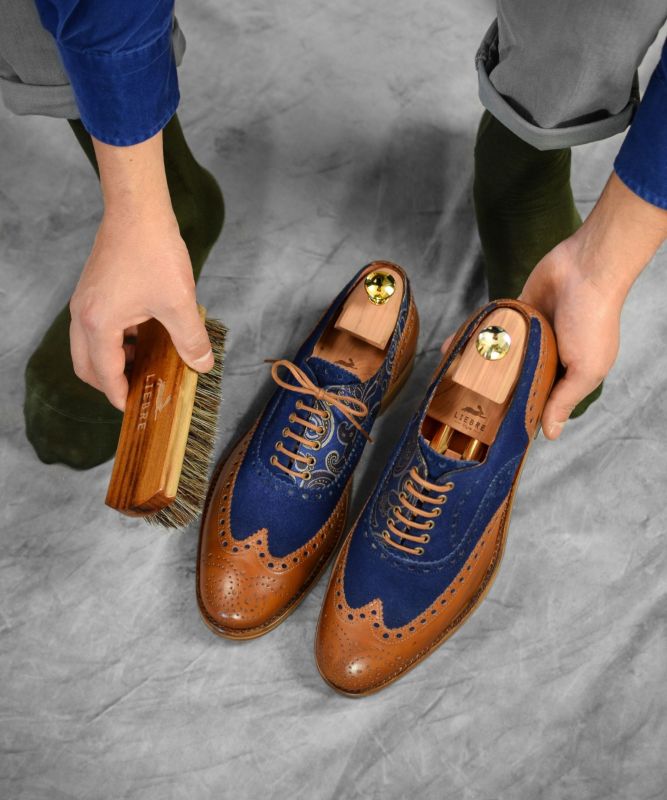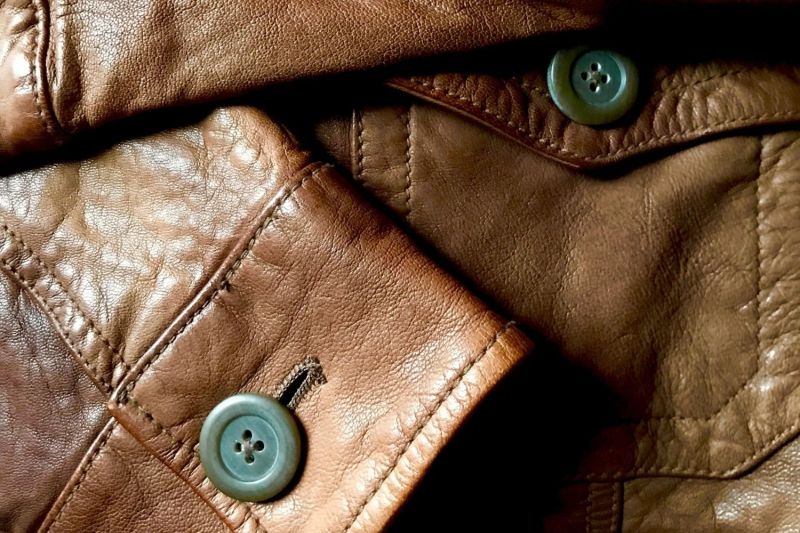You have likely seen the Halloween decorations and pumpkins start to pop up in stores, the candy aisle has doubled in size, or your Thursdays, Saturdays, Sundays, and Mondays are dominated by football. Any of these could tell you that fall is here, so you need to start preparing for apple picking, corn mazes, pumpkin patches, and of course, colder and wetter weather.
While changing the decorations around the home, switching your regular tires on the car to snow tires, and putting the lawn mower away for the rake or leaf blower are part of the preparations, your wardrobe needs attention, too. Here are some tips for ensuring you have the proper clothing prepped for the season and your summer clothes are taken care of appropriately for the long wait to spring. Keep reading to get some tips on men’s fall fashion.
Get the right fabrics

Fabrics are essential in men’s style when getting ready for season changes. Spring and summer fabrics are designed to keep you cool, allowing airflow. Fall and winter fabrics are a little different because they need to protect you against multiple things, including wind, rain, snow, and also trap air. The way they accomplish this is a tighter weave.
A tighter weave in your clothing means that air doesn’t escape through it as easily, and because air is an insulator, the more air you can trap, the warmer you will be. A tighter weave also means wind and rain don’t get through quickly. So, what fabrics should you focus on in your fall wardrobe?
- Shearling: This is the skin of a sheep with the wool left on. That means one side is fluffy and one side is leathery. This is a trick as old as time when ancient man wore skins. Because there is no seam between the layers, no air gets through.
- Flannel: This wool has been brushed on one side to lift the fibers. This means it traps more heat and feels softer. There is nothing better for your everyday cold-weather button-up than a flannel. Get more than one because your partner will steal it.
- Cashmere: Another wool, this one is made from the hair of the eponymous goat. The fibers are fine — a fifth as wide as a human hair — making it softer and around three times warmer than sheep’s wool
Choosing the right colors for the season

It’s time to put away the bright, summery colors and turn to fall shades that work with your look and style. Here are some fall colors to incorporate into your autumn wardrobe.
- Earth tones: These are the classic fall colors, and they always look just right. Consider shades of brown, tan, olive green, and burgundy.
- Deep blues: These colors are a bit more versatile than the earth tones above, and they are easy to dress up or dress down, depending on the occasions you wear them. Try navy, dark indigo, and even black.
- Rust and orange: These fall shades are a way to add some warmth to your autumn wardrobe, and you can pair them with neutral colors for a more subtle look. You may also want to mix and match them with other fall colors for a more vibrant feel.
- Light gray: This is a neutral color that is easy to incorporate into dressy or informal occasions. Light gray can also add some contrast to your fall lineup of clothes.
- Pale pink: This is probably a more unexpected color for men’s fall fashion, but it can be really stylish. It’s a good choice if you want to add a pop of color to your outfit.
When choosing colors for your fall wardrobe, it’s important to consider your personal style and the occasion. If you’re not sure where to start, stick to the classic earth tones and deep blues. You can always add more color as you get more comfortable with the different autumn shades of men’s fashion.
Shave your sweaters

You read that right. When you pull your sweaters out of the drawer or storage bin, there are likely to be little balls of fabric stuck on them. This makes it look old and worn and is incredibly annoying. This “pilling” results from extensive wear, and you’ll find it in the places that it rubs against itself, like under the arms or rubbing against other fabrics when stuffed in a drawer.
Resist the urge to pull these off because doing so will damage the fabric. Instead, invest in a fabric shaver. These are very economical and can be found at any fabric store. If you have steady hands, a razor will work in a pinch, but I would try to practice on a sweater you don’t mind losing until you get the hang of it.
Prepare to layer

Yes, that is James Bond in the photo, but in addition to being a superspy, 007 has a great fashion sense, and he’s properly dressed for the fall with a layered outfit. The fall can be unpredictable weather-wise, a bitterly cold morning could give way to an unseasonably warm afternoon (just ask anyone who’s overdressed for apple picking how miserable that can be), so the key to men’s fall fashion is layering your outfit so you can adapt to changing conditions.
The best option for layering for fall is to start with a T-shirt (either a short or long-sleeved one) and cover that with a sweatshirt or sweater, followed by a jacket if you’re going outside. A fleece or down vest is also a good option for fall fashion.
Store your shoes properly

Shoes must be stored properly to avoid damaging their materials or shape. When you put summer shoes away, there are multiple steps you should take to ensure they still look fantastic when you return to get them in the spring.
- Polish the leather: There aren’t many summer shoes that will need to be polished before being put away, but anything that is leather should be polished. If you have summer dress shoes, these are the ones that should get the treatment.
- Use shoe trees: Shoe trees are typically wood, although some are plastic. They are shoe-shaped blocks inserted into the shoe to help retain its shape between wears. While they used to be used everywhere in the closet, they are best now used for long absences like off-seasons. Pro-tip: If you invest in cedar, the wood absorbs moisture, preventing rot and odors.
- Bag or box: Ideally, you still have the box the shoe came in, but if you are a normal person, then you don’t have the room for random empty shoe boxes, and you throw them away. If that is the case, a plastic grocery bag will work fine, but the idea is to get some protective layer over the shoe to protect the outside the way a shoe tree protects the inside.
Waterproof your clothes

Now for the shoes, you will wear in place of the summer shoes. These shoes are going to see more harsh weather. Rain, mud, snow, ice, these shoes need to be able to stand up to the elements. With that in mind, waterproofing your shoes is the best way to ensure your feet stay dry and you stay on the move.
Your shoes aren’t the only items that can use a little waterproofing. While your shoes or boots protect your feet from the elements, your jackets protect your torso. Surviving the colder weather means keeping both of those areas dry and warm.
Unpack

Unpacking and organizing your closet between seasons can be overwhelming if you have a large wardrobe. But there are a few things that will help you lessen the burden if you do it right.
- Wash undelicates: One of the biggest problems with packing clothes away is the musty smell that comes with unpacking. You want to wash everything to get rid of it, but the thought of a mountain of laundry makes you feel like March will be here before you finish. Focus on clothes that are easy to wash, like socks and sweats.
- Hang the rest: Sometimes, just hanging sweaters and jackets up will do the trick. If you have a balcony or porch, you can hang them outside while the weather is nice to let some wind get through them. If not, hanging them up indoors with a fan should do the trick.
Pack

Now that you have unpacked the cold weather gear, it is time to pack the warm weather garb. It is best to ensure everything is clean before packing it away. If not, the unpacking chore in a few months will feel even more daunting. Here are a few tips to make it easy.
- Vacuum seal plant-sourced/not animal-sourced: This can seem complicated, but vacuum seal bags can be a tad complex. While the saving of storage space can be a huge benefit, these bags can damage some of your clothing. The rule of thumb is if it is sourced from animals like silk, cashmere, or leather, the compression can irrevocably damage the garment. If it is sourced from plants like cotton, then it is fair game.
- Use pine hangers: For your hanging garments like suits or shirts, you want to use pine hangers. The pine repels moths and can help protect your garments from pesky bugs. Also, putting plastic over them (even trash bags will work) can protect your garment from external damage.
- Get rid of what you don’t wear: We tend to make it harder on ourselves every time we pack and unpack by holding on to items we don’t wear. Go through your clothing and get rid of it if 1. You didn’t wear it this season. 2. It has stains that won’t come out. 3. They no longer fit. Trust me, guys, goal clothing rarely works.
- See shoe storage above
There you have it. Now that your wardrobe is taken care of, you can start looking into what you want to wear for the corn maze, the pumpkin patch, or the apple picking orchard. If you follow all of these tips, your wardrobe is in good shape for the holiday and New Year seasons.
We’ll see you in the spring to do this all over again.




